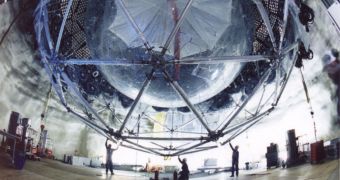Researchers working on an advanced physics experiment may have confirmed some of the first signs of CP violation. This could lead to developing a plausible explanation as to why there is more matter in the Universe than antimatter, if equal amounts of the two were produced during the Big Bang.
The CP violation is a particle physics concept that refers to finding an exception to the CP-symmetry. The latter is a stable combination of charge conjugation symmetry and parity symmetry.
What this implies is that the universal laws of physics would remain unchanged if a particle were to be suddenly replaced with its antimatter particle in a system. The second part indicates that the same laws would remain unchanged if particles on the left were swapped to those on the right.
The first CP violation was recorded in elementary particles called neutral kaons, back in 1964. Some 16 years later, its discoverers, scientists James Cronin and Val Fitch, won the 1980 Nobel Prize in Physics for their finding.
In a recent study, experts shows that the oscillations of elementary particles called neutrinos could in fact be different from those of their antimatter particles, called anti-neutrinos. The finding was made using the international T2K neutrino experiment in Japan.
Interestingly, the discovery is very important because, if confirmed, it could provide a neat, elegant explanation for why the Universe exists. According to the basic tenants of physics theory, the galaxies, stars, black holes and other structures in the Universe should not exist.
Some 13.75 billion years ago, the Big Bang produced equal amounts of baryonic matter and antimatter. The two should have annihilated each other entirely, and the Cosmos should have been left blank, but somehow this did not happen.
An imbalance occurred, that allowed baryonic matter to endure while antimatter largely disappeared. The T2K studies are meant to address those imbalances, and the recent discoveries are an excellent step in that direction.
Before the March 11, magnitude 9.0 earthquake that struck Japan, the detector registered six pristine electron neutrino events, rather than the expected 1.5. But experts listed their results as an “indication,” Universe Today reports.
“People sometimes think that scientific discoveries are like light switches that click from ‘off’ to ‘on’, but in reality it goes from ‘maybe’ to ‘probably’ to ‘almost certainly’ as you get more data. Right now we are somewhere between ‘probably’ and ‘almost certainly’,” says professor Christos Touramanis.

 14 DAY TRIAL //
14 DAY TRIAL //